By Brianna Vincent
When I hear the words ‘art studio’, I think of a place filled with peaceful solitude and quiet. But Emily’s studio in the Harris home at 34 Nile Street East was a bustling social space that served a variety of purposes, some of which we can find evidence for advertised in the local papers. We had already found that in 1892 local artist and critic Colonel Benjamin Branfill held two lectures on ‘artistic anatomy’ in the Emily Harris Studio for the members of the Bishopdale Sketching Club. Then, last week, searching through PapersPast for advertisements for the Harrises’ School at Nile Street East also turned up results for Emily Harris’s Studio, giving us some further insights into how Emily enjoyed using her space.
We have ads that show a theological study reading group being hosted in the Miss Harris’s Studio at Nile Street East, with topics such as ‘reincarnation’, ‘universal religion’, and ‘The History and Ethics of India’. Seemingly open to the community at large, on 21 September 1898, the Colonist announces the ongoing event:
Theosophy- Those who may be interested in Theosophical subjects will see by advertisement in this issue that on each Wednesday evening for sometime to come, papers dealing with Theosophy will be read at Miss Harris’s Studio, Nile Street East. No charge will be made for admission.
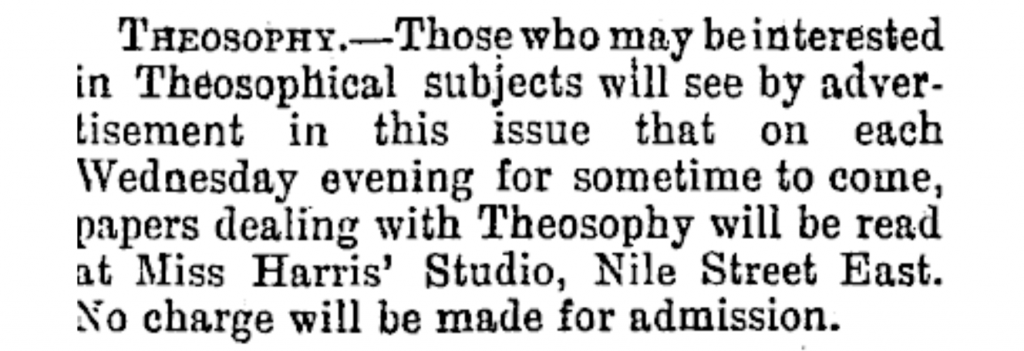
Delightfully, we also found that Emily’s studio functioned as the Nelson Chess Club’s clubrooms from 1897. The Nelson Chess Club had been reformed in 1894, ladies admitted free (although a charge was eventually introduced by Harris’s time), after it had ceased a few years previously. Prior to the Harris Studio, the Club had been occupying the City Council Chambers one evening a week, ever since the Club had ambushed the Mayor with a “deputation, consisting of as many of those present who could conveniently attend” (Colonist, 8 May 1894) to ask for the use of the rooms. In 1897, we find the first appearance of the Harris name attached to the club with J. P. Harris (no relation) admitted as a member, Miss Harris elected as one of the vice presidents, and Miss Harris’s Studio Room being secured for the club on Mondays and Fridays from 7 till 10 p.m.

It is a venture that continues at the Harris Studio at least until 1899, after which the Nelson Chess Club disappears from the Colonist’s reporting. The Nelson Chess Club was a lively, musical group with the club putting on a concert and ‘conversazione’ at Rechabite Hall, in May 1897, an event Emily would have been involved in as it occurred a month after she joined.
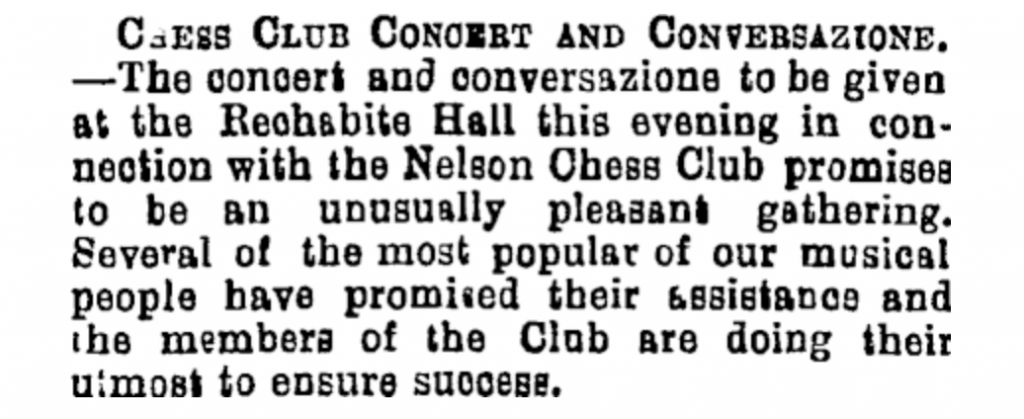
The Chess Club held internal competitions, often split into teams lead by Mr Connell and Mr Flett, but also competitions between themselves and the Richmond and Foxhill Chess Clubs. Some of these tournaments involved trips out to Wakefield and Richmond and some were held closer to home. In August 1897, on a Saturday afternoon, a Town vs Country match was held at Miss Harris’s studio with 20-24 players fitting into the room or several rooms that Emily Harris had claimed for her studio in the family home.
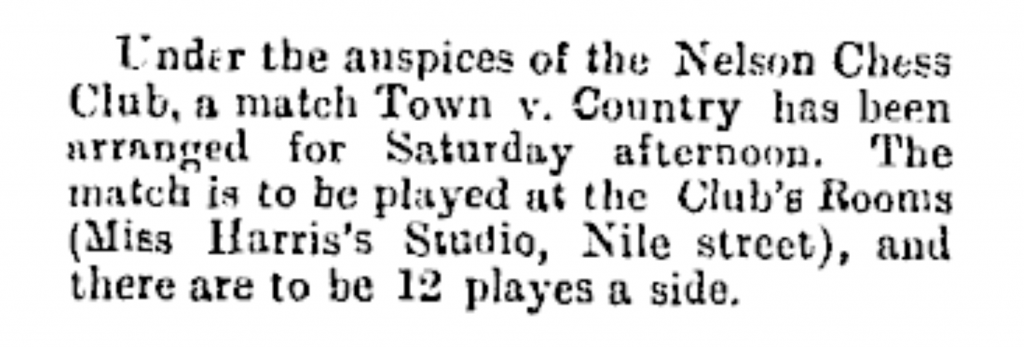
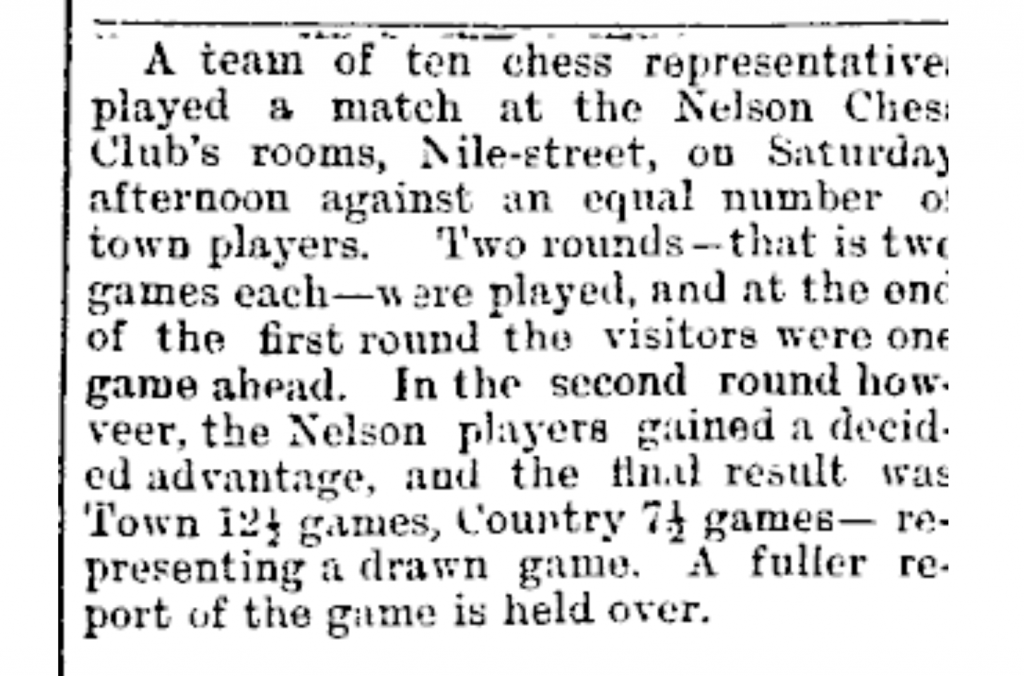
Miss Harris is not mentioned in the game’s eventual write-up (Nelson Evening Mail), but she does appear in the rematch in September winning one of her two games (Colonist). In the match results around this time we can see Miss Harris both winning and losing as she participates in the club’s internal competitions as well as a member of the ‘Town’ team.
With the studio being used by the Nelson Chess Club on Monday and Friday nights and by the Theosophy group on Wednesday nights, the Miss Harris Studio was a busy place to be. And finally, at the heart of everything, is Emily Harris’s studio being an art space. Advertised in the papers, Emily opens up her studio to the public numerous times. In December 1896, she publishes this notice in the Colonist:
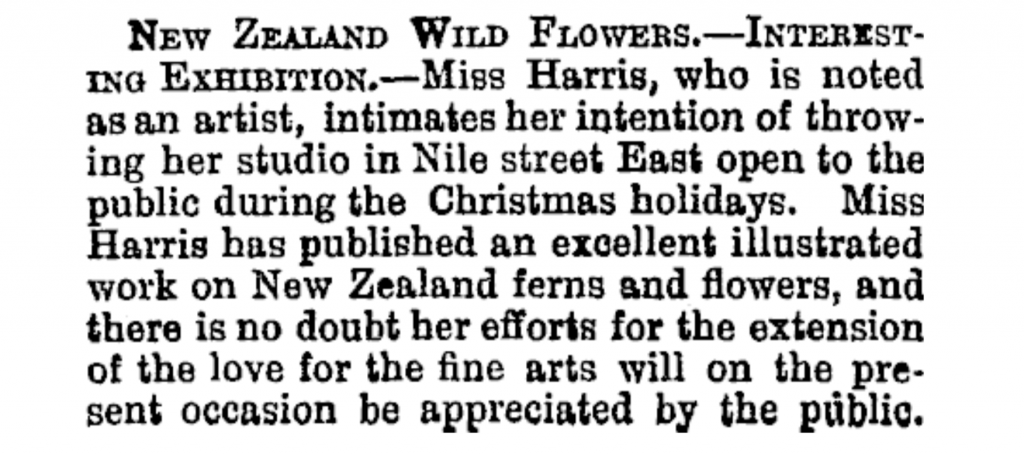
She opened her studio to the public, often during holiday periods over Christmas or Easter, in 1899, 1906, 1908, 1909, 1915, 1919, and the last one we found in 1921.
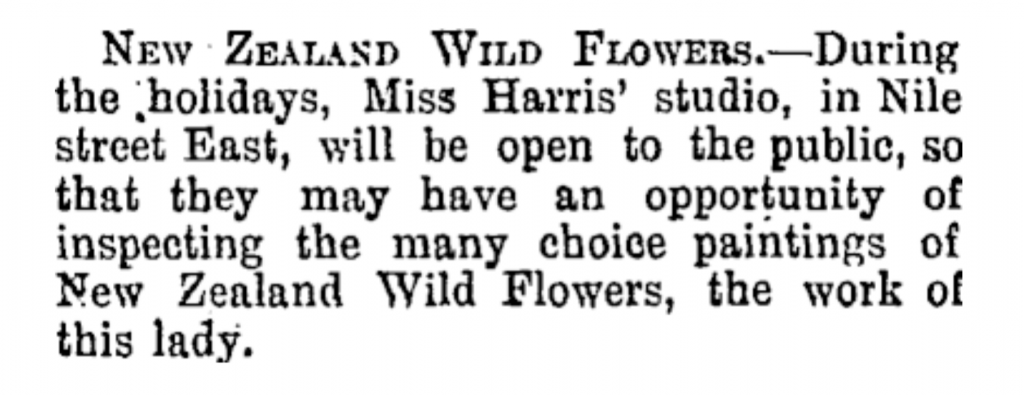


And these are just the advertisements, the diaries are full of people dropping in to see Emily and her work and there were probably many more visits and visitors which didn’t make it into the ephemera of the newspapers or diaries. At 34 Nile Street, Emily surrounded herself with readers, thinkers, chess players, and art appreciators. Her studio space was not a place of solemn solitude, but one of warmth and community.
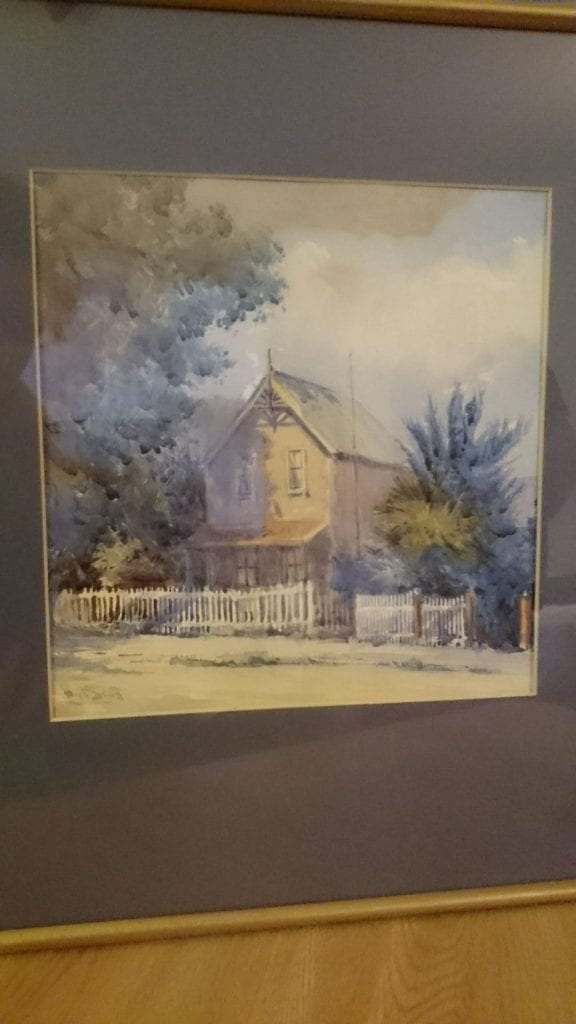
Lead writer: Brianna Vincent
Research support: Michele Leggott, Makyla Curtis